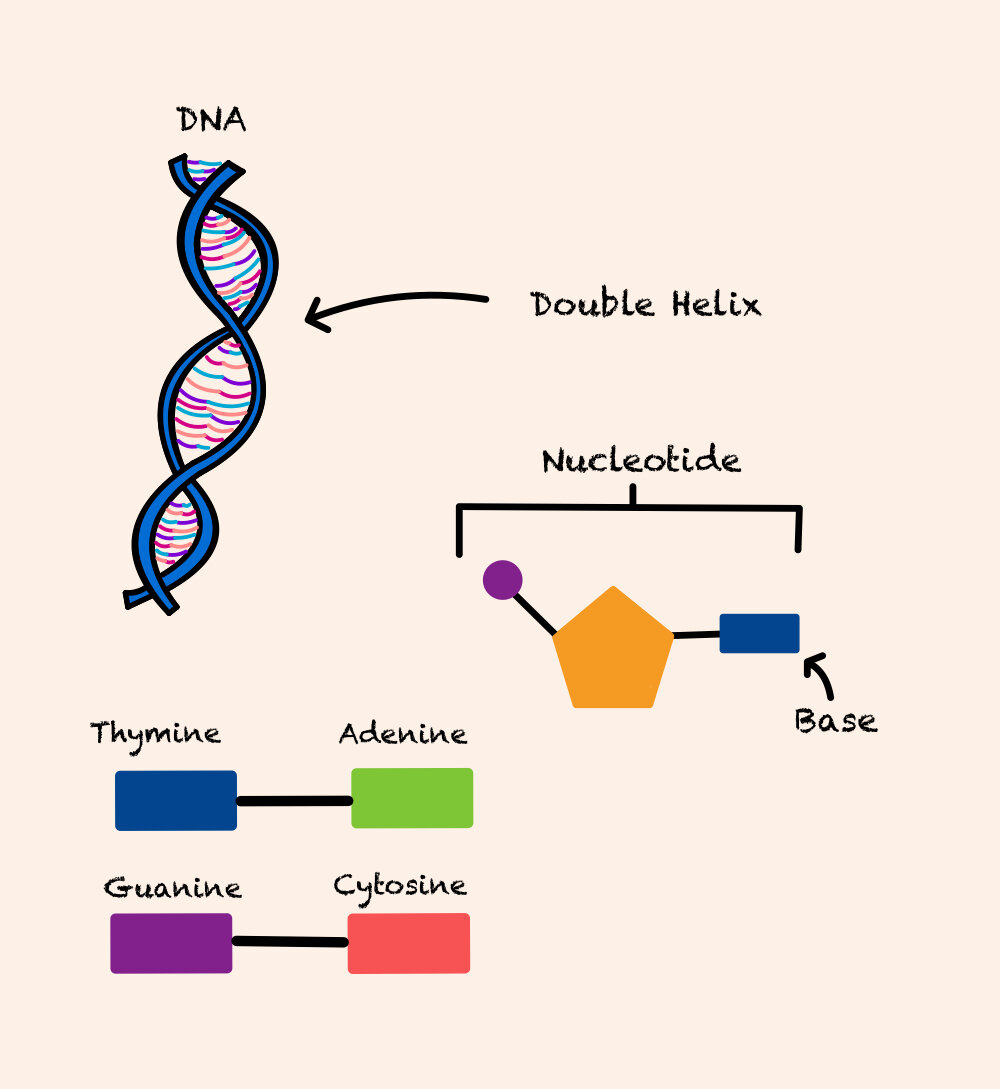DNA and protein production
Replicating DNA is very helpful…..
DNA Polymerase and Primers
In DNA replication, we have to define the players in the game before we can understand how they all work in tandem.
DNA polymerase is an enzyme which joins nucleotides together. This enzyme adds nucleotides, using complementary base pairing, to the deoxyribose (3’) end of the new DNA strand which is forming in DNA replication.
A primer is a short complementary sequence of nucleic acid that starts DNA replication.
Ligase is the enzyme which links fragments of DNA together.
DNA Replication
Nucleotides must be added in a 5’ to 3’ direction.
As the DNA molecule has an antiparallel structure, one strand is able to continuously add nucleotides (the leading strand) and the other must add nucleotides in sections (the lagging strand).
The process of DNA replication:
Step 1:
The DNA double helix structure is unwound.
The hydrogen bonds holding the bases and two strands together are broken and the DNA structure unzips.
Step 2, Leading strand:
A short strand of nucleotides called a primer binds to the 3’ end of the DNA template.
Using complimentary base pairings, DNA nucleotides are added by DNA polymerase onto the new DNA strand in a 5’ to 3’ direction from the perspective of the new strand forming.
Step 2, Lagging strand:
A primer binds to the 3’ end of a short section of the DNA template. Using complementary base pairings, DNA nucleotides are added by DNA polymerase onto the new DNA strand in a 5’ to 3’ direction.
As the strand continues to unwind, more primers bind to the DNA template and repeat the above process to synthesise the new strand in fragments.
The DNA fragments are then joined together by ligase.
Step 3:
The two new DNA strands wind up to form a double helix structure, to create two identical DNA strands called chromatids.
PCR
Polymerase chain reaction (PCR) is a technique used to amplify specific sections of DNA.
Some applications of PCR include:
- Paternity testing (giving proof of identity for a child’s biological father)
- Diagnosing genetic disorders
- Providing DNA samples for criminal investigations
The process of PCR:
Using a thermal cycler, the DNA strand is heated between 92 and 98 degrees Celsius to separate the two strands.
The DNA is then cooled to between 50 and 65 degrees Celsius. This allows complementary primers to bind to their target DNA sequences on to the 3’ ends of the target sequence of the target strands to commence replication.
The sample is then heated between 70 to 80 degrees Celsius and heat- tolerant to allow heat-tolerant DNA polymerase to replicate the target DNA sequence, forming two strands of DNA.
This process is then repeated in cycles of heating and cooling to amplify the required sequence of DNA.
Gel electrophoresis is a technique which can be used to separate macromolecules such as DNA.
Calculations involving PCR
You may be asked to calculate the number of DNA molecules produced following several cycles of PCR. Remember, that after each cycle of PCR, the initial number of DNA molecules is doubled….***
RNA
There are 3 main forms of RNA that we discuss in Higher Biology: mRNA, tRNA and rRNA. These are their roles:
mRNA: Messenger RNA (mRNA) carries the genetic code for a protein from the nucleus to the ribosome for translation.
tRNA: Transfer RNA (tRNA) carries an amino acid to the ribosome and displays an anticodon, complementary to a specific mRNA codon, which ensures each amino acid is in the correct sequence.
rRNA: Ribosomal RNA (rRNA) is a primary component in ribosomes and therefore helps the organelle carry out protein synthesis.
RNA is different from DNA in a few ways.
-RNA is single stranded whereas DNA is double- stranded.
-RNA bases include cytosine, guanine, adenine and uracil, whereas DNA has cytosine, guanine, adenine and thymine.
-RNA contains a ribose sugar, whereas DNA contains a deoxyribose sugar.
Key Points!
-
DNA
DNA is the genetic code that controls cells.
-
DNA structure
DNA are made up of nucleotides
Nucleotides have a base, which is either adenine (A), cytosine (C), guanine (G) or thymine (T).
DNA has a double helix structure.
-
Genes
Genes are sections of DNA that code for specific proteins.
Proteins are made up of amino acids.
-
RNA
RNA copies genetic code from DNA and carries it from the nucleus to the ribosome in the cytoplasm. This is where the RNA codes for a specific chain of amino acids.



